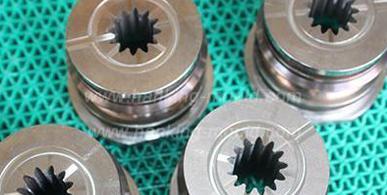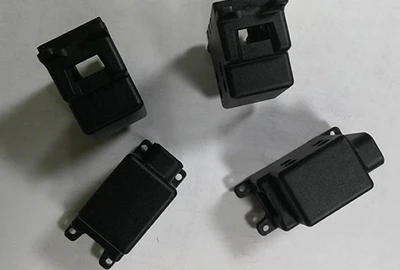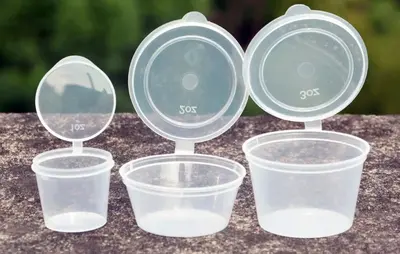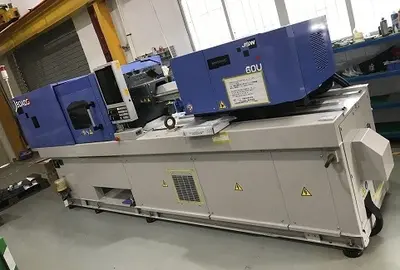

In products made with injection moulding, the local stress state is different in various parts, and the degree of deformation of the product will depend on the distribution of stress. If there is a temperature gradient during cooling, this kind of stress will occur, so this kind of stress is also called "forming stress".
The internal stress of products made with injection moulding includes two types: one is forming stress, and the other is temperature stress.
When the melt enters a cooler mold, the melt near the mold cavity wall solidifies rapidly and freezes the molecular chain segment. Due to the poor thermal conductivity of the solidified polymer layer, a larger temperature gradient is formed in the thickness direction of the product. The center of the product solidifies quite slowly, so that when the gate is closed, the melt unit at the center of the product has not solidified, and the injection molding machine cannot replenish the cooling shrinkage. Thus, the internal shrinkage of the injection molded product is opposite to the effect of the hard skin; while the center is in static stretching, the surface is in static compression.
In addition to the stress caused by the volume contraction effect during the filling and flow of the melt, there is also stress caused by the expansion effect of the runner and gate outlet. The former effect causes stress related to the flow direction of the melt, while the latter causes stress perpendicular to the flow direction due to the outlet expansion.
Under the condition of rapid cooling, the influence of orientation stress can cause the formation of internal stress in polymers. Due to the high viscosity of polymer melt, internal stress cannot relax quickly, which affects the physical properties and size stability of the product.
The influence of various parameters on orientation stress
Melt temperature: A high melt temperature leads to low viscosity, and the degree of orientation decreases with the decrease of shear stress. On the other hand, the high melt temperature can make the stress relaxation faster, and promote the ability to relax the orientation.However, in the case of unchanged injection molding machine pressure, the cavity pressure will increase, and the strong shear force will cause an increase in orientation stress.
Delaying the holding pressure time before the nozzle is closed will increase the orientation stress.
Increasing the injection pressure or holding pressure will increase the orientation stress.
A high mold temperature can ensure slow cooling of the injection molded product, playing a role in relaxation of orientation stress.
Increase the thickness of the product to reduce the orientation stress, because the thick-walled product cools slowly, the viscosity increases slowly, and the relaxation process of stress is long, so the orientation stress is small.
As mentioned above, due to the large temperature gradient between the melt and the mold wall during filling, the outer layer of the solidified melt blocks the contraction of the inner layer, resulting in compressive stress (contraction stress) on the outer layer and tensile stress (orientation stress) on the inner layer.
If the mold cavity pressure is held for a long time after filling, the polymer melt will replenish the mold cavity, which will increase the mold cavity pressure and change the internal stress caused by temperature unevenness. But in the case of short holding time and low cavity pressure, the internal stress of the injection molded product will remain the same as during cooling.
If the mold cavity pressure is insufficient during the initial cooling of the product, the outer layer of the product will form depressions due to solidification and shrinkage, while if the mold cavity pressure is insufficient after the cold and hard layer of the product has formed, the inner layer of the product will separate due to shrinkage, or form voids. If the mold cavity pressure is maintained before the gate is closed, it is beneficial to improve the product density, eliminate cooling temperature stress, but it will result in greater stress concentration near the gate.
Therefore, the higher the mold cavity pressure and the longer the holding time, the more beneficial it is to reduce the shrinkage stress caused by temperature, and conversely, it will increase the compressive stress.
The presence of internal stress in the product will seriously affect the mechanical properties and performance of the injection molded product; due to the uneven distribution of internal stress in the product, cracks will occur during use. When used below the glass transition temperature, irregular deformation or warpage may occur, and the product surface may become "white", cloudy, and optical properties may deteriorate.
Efforts to reduce the temperature at the gate and increase the cooling time are beneficial to improve the uneven stress of the product, making the mechanical properties of the product uniform.
Whether for crystalline or amorphous polymers, the tensile strength exhibits anisotropic characteristics. The tensile strength of amorphous polymers varies with the position of the gate; when the gate is aligned with the filling direction, the tensile strength decreases with the increase of the melt temperature; when the gate is perpendicular to the filling direction, the tensile strength increases with the increase of the melt temperature.
Since the increase in melt temperature strengthens the relaxation of orientation stress and the weakening of orientation stress reduces the tensile strength, the orientation can be affected by the orientation of the gate through the flow direction, and since the anisotropy of amorphous polymers is more significant than that of crystalline polymers, the tensile strength in the direction perpendicular to the flow is greater for amorphous polymers than for crystalline polymers. Low-temperature injection molding has greater mechanical anisotropy than high-temperature injection molding. When the injection temperature is high, the strength ratio of the perpendicular direction to the flow direction is 1.7, while when the injection temperature is low, the ratio is 2.
Therefore, the increase in melt temperature will cause a decrease in tensile strength for both crystalline and amorphous polymers, but the mechanisms are different. The former is due to the effects of orientation, which lowers the tensile strength.






 Call us on:
Call us on:  Email Us:
Email Us:  1st Floor, Block1, No.3 Beiting Road, Houting Community, ShaJing Street, Bao'An District, Shenzhen City, Guangdong Province, China
1st Floor, Block1, No.3 Beiting Road, Houting Community, ShaJing Street, Bao'An District, Shenzhen City, Guangdong Province, China